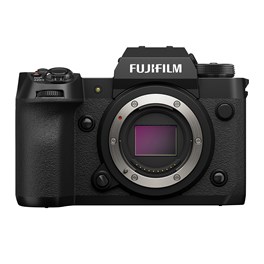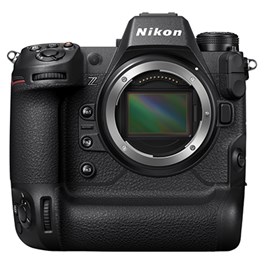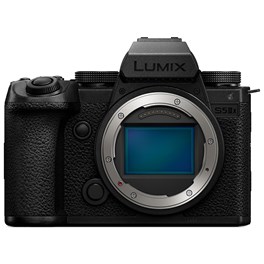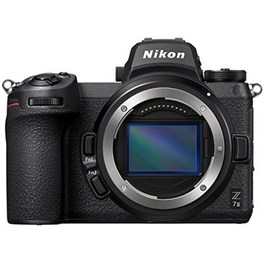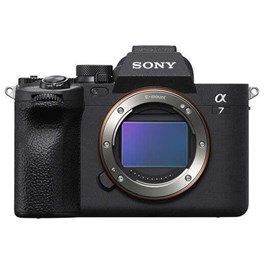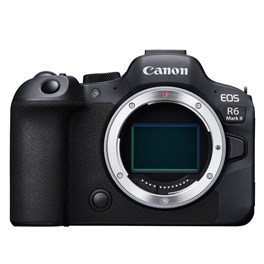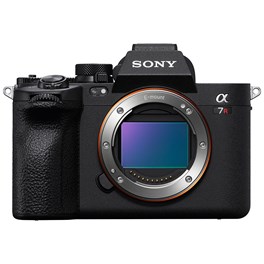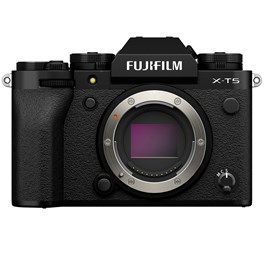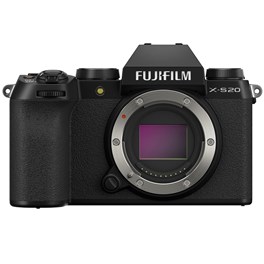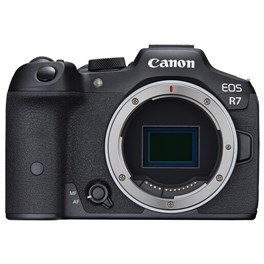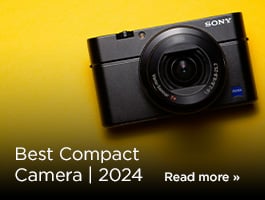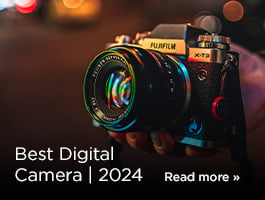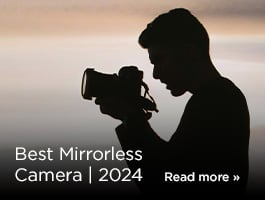
The best mirrorless cameras represent the best of the best in the photo and video worlds right now. This is where the major manufacturers are making all their most exciting developments — from ultra-high resolution sensors to super-fast burst speeds and intelligent autofocus systems, it’s all happening in the mirrorless ranges.
Fortunately, this doesn’t mean that you have to spend a fortune to get a great mirrorless camera. We’ve compiled this list of the best mirrorless cameras you can buy right now, and we’ve made sure to include budget and beginner-friendly options to make sure there’s something for everyone. Whether you’re looking to shoot photos, videos, or both, these are the mirrorless cameras we recommend most highly to get it done.
Scroll to the bottom of this page if you need some explanation of what a mirrorless camera is, and how it differs from other types of camera — and see our more general guide to the best digital cameras if you also want to consider DSLR and compact options.
Best Hybrid Shooters
More and more, visual content creators are finding themselves acting as jacks of all trades. Being able to shoot both stills and video – and do them well – is a real asset for anyone looking to make their mark in the digital imaging landscape of 2023. As such, it pays to have a camera that’s capable of keeping up with you in both realms, allowing you to seamlessly switch between modes depending on the situation.
This is where versatile mirrorless cameras truly come into their own. The light, portable bodies of the cameras perfectly complement their high-speed shooting capabilities, and even in lower-end models, you’ll generally get significantly better video quality and more video options than you would from a DSLR.
So, we’ve picked out our favourite mirrorless cameras for those who like to do a bit of everything. Want to seamlessly switch from shooting superb stills to high-quality video and back again? These mirrorless cameras are our top picks.
|
Pros:
Cons:
|
|
Now, Canon EOS R5 was and will continue to be the blueprint for the kinds of cameras we’ll be seeing over the next decade. And that's something to remember when you see the R5 II.
This full-frame mirrorless camera elevates what the R5 was, by several levels. This camera features “accelerated capture” with a dual processor setup of DIGIC Accelerator and DIGIC X processors, combined with deep-learning AI algorithms. This allows the camera to upscale its 45MP resolution to 180MP, enabling detailed cropping with minimal quality loss. Additional improvements include a stacked, back-illuminated sensor, enhanced IBIS up to 8.5 stops, and a high-resolution viewfinder. The camera achieves a maximum shutter speed of 1/64,000sec and a burst rate of 30fps, with advanced FTP for professional use.
The Dual Pixel Accelerated AF system, with 5,850 AF points, provides extensive coverage and operates well in low light. AI-powered Subject-Detection and “Action Priority” features enhance focus accuracy, particularly for moving subjects. Eye Control AF tracks eye movements in the viewfinder for precise focus. Video capabilities include 8K 60p RAW and 4K at 120p and 60p, supporting various recording formats and professional audio options. Simultaneous recording of photos and videos on separate cards is a standout feature, beneficial for photojournalists and sports photographers.
|
Pros:
Cons:
|
Sensor: 40.2MP APS-C X-Trans CMOS 5 HR Video: 8K/30p Recording Stabilisation: 7-Stop In-Body Image Stabilisation (IBIS) Shutter Speed: 20fps Electronic, 15fps Mechanical Viewfinder: 5.76M-dot EVF with 0.8x Magnification |
The Fujifilm X-H2 is a highly sophisticated camera, delivering exceptional results in both stills and video. While its sibling, the more expensive Fujifilm X-H2S, offers faster shooting speeds and 8K video, the more balanced feature-set of the Fujifilm X-H2 means it’s our pick as Fuji’s best hybrid camera.
Stills shooters have that 40.2MP sensor, with an improved image-processing algorithm, which is capable of capturing truly immense levels of detail. And if 40MP isn’t enough for you, the Pixel-Shift Multi-Shot mode uses image stabilisation to record 20 frames in a single shutter, and combine them into one monster one DNG RAW file with 160MP of resolution. Elsewhere on the camera, you’ve got the electronic shutter that can achieve speeds of 1/180,000 sec.
Video shooters, meanwhile, can enjoy 8K 30p video recording internally in 4:2:2 10-bit colour. There’s a 2x digital zoom available when recording 4K, the F-Log2 colour profile for maximising dynamic range, 5-axis in-body image stabilisation that provides seven stops of compensation, and the ability to record ProRes Raw or Blackmagic Raw via HDMI.
|
Pros:
Cons:
|
|
Arguably, this is the professional camera to beat right now. The Nikon Z9 is an outstanding achievement, a machine that really can do everything and more. It’s so fully featured in stills and video that it seems almost a shame to only use it for one or the other – which is why it’s so perfect for hybrid shooters.
Stills shooters get greater speed than ever. The burst rate of 20fps at full-resolution 45.7MP is impressive, but drop that resolution down to a still-serviceable 11MP, and you get a staggering 120fps burst rate. With autofocus performance that’s absolutely class-leading, powered by AI, this is a machine to capture just about anything.
And for video? Well, the 8K resolution in a range of codecs and formats is something of a given for a camera at this level. However, the Nikon Z9’s ace in the hole is its heat dissipation technology, which enables the user to record 8K video continuously for up to 125 minutes!
Best Mirrorless Cameras for Video
Over the past couple of decades, video on consumer cameras has gone from being a cute afterthought to becoming a hugely exciting tool for filmmakers and content creators. While it was kick-started by the DSLR video revolution in the early 2000s, these days the best cameras for video are mirrorless. With cutting-edge sensors, lightning-fast processors and a range of resolutions and codecs to suit every user, these cameras are ideal for a video shooter on any budget.
For professional video shooters, there are plenty of options more sophisticated than the cameras we’ve listed here – our range of professional camcorders is where you want to be. Consumer video cameras like the mirrorless camera we’ve listed here offer the best balance between performance and price for the majority of users. Whether you’re making films on a budget, producing content for social media, starting your own YouTube channel, or just shooting for yourself, these are the best video cameras to get it done with.
|
Pros:
Cons:
|
|
Last year, the Panasonic S5 took centre stage for our pick of the best mirrorless cameras for video. Time has passed but this year, the ball stays firmly in Panasonic’s court. The Panasonic Lumix S5 IIX is similar to its regular S5 II sibling but offers way more options for filmmakers.
With RAW video capabilities, ALL-I compression, direct-to-SSD shooting, Apple ProRes and streaming functionality, this compact hybrid camera could easily be part of a professional workflow. It’s impressive to us that there’s been no compromise here either. They are simply amazing additions to what the S5 II already has to play with.
It’s safe to say that if you are a photographer looking to make some video, a hybrid shooter or a solo filmmaker who needs an upgrade, the S5 IIX is a very sensible option. There’s not a lot it doesn’t cover and you have a huge number of lenses that will complement what this camera offers.
|
Pros:
Cons:
|
Sensor: 24.2MP APS-C Exmor CMOS Video: 4K/30p Recording Autofocus: Real-Time Eye Autofocus Screen: 3.0-inch Vari-angle LCD Touchscreen Connectivity: Wi-Fi and Bluetooth for wireless streaming and file transfer |
Sony’s original ZV-E10 was a hit — a small, travel-friendly mirrorless camera tailored specifically to vloggers. This newer version doesn’t mess with what was already working, but simply goes about improving and iterating in unflashy but welcome ways. The original ZV-E10 had slightly meagre battery life, for instance — that has now been addressed, with the ZV E10 II offering longer shooting times before needing a charge.
This camera is designed to be an all-in-one vlogging package straight out of the box. As such, while you can plug in an external mic, the built-in three-capsule mic is a cut above the average for a camera of this type, and will get the job done in most situations. Capable of putting out 10-bit 4K video at frame rates of up to 60p, the ZV-E10 II offers ample quality for vloggers of all stripes.
The main feature you might miss is sensor-based stabilisation, which the ZV-E10 II lacks — this was likely necessary to keep the cost and size down. The digital stabilisation system works okay, but it crops into your footage and is not as effective as an optical system — indeed, you may well find you prefer to leave it off and correct footage in post. If you want a similar vlogging camera with its own optical stabilisation system, the Fujifilm X-S20 is a solid choice — though it does cost a little more.
|
Pros:
Con:
|
|
The Panasonic Lumix GH7 comes with the latest suite of video options, with the ability to shoot in ProRes joining the huge range of codecs and formats available. However, it’s also no slouch for stills, producing brilliant, punchy images from its Four Thirds sensor, and offering the capability to burst-shoot at up to 75fps with fixed focus.
The big upgrade on this camera from the previous GH6 is something that a lot of Panasonic releases have been gaining over the past few years — phase-detection autofocus. As Panasonic waves an arguably overdue goodbye to its contrast-based “Depth from Defocus” system, the result has been cameras that can acquire and track focus much more effectively. This has also coupled well with a must-have feature from the past few years of camera development — intelligent, AI-powered subject-recognition autofocus. With tons of lenses available for its Micro Four Thirds lens mount, the Lumix GH7 is a compelling proposition for video shooters.
Best Mirrorless Cameras for Photography
While pretty much all modern consumer digital cameras are hybrid cameras – meaning they shoot both stills and video – here we’ve picked out some of the finest mirrorless camera options for those who are photographers first. With plenty of megapixels, advanced autofocus systems, fantastic lens ranges and well-balanced bodies, these are the mirrorless cameras for immersing yourself in capturing the moment.
No matter whether you shoot landscapes, portraits, sports, action, wildlife, macro or astrophotography, these cameras should excel in your chosen field – as long as you pair them with the right lenses. Some of the systems we’ve included are relatively new and are still expanding their lens range, so if you’re jumping from a DSLR system and already have a lens collection, you may want to invest in a mount adapter to get the most use out of your glass. If you stick with the same manufacturer, you’ll generally get full functionality of AF and stabilisation.
|
Pros:
Cons:
|
|
A refinement of an already winning formula, the Nikon Z7 II offers one of the best shooting experiences on the market. With 45.7MP of resolution to play with, photographers can capture absolutely gorgeous images, and while there’s plenty of scope for tinkering with RAW files, the out-of-camera JPEGs don’t look half bad.
The comprehensively featured hybrid autofocus system takes centre stage here. With ultra-wide coverage and 493 focus points, the Z7 II is capable of nailing the shot of pretty much any subject. The intelligent face- and eye-detection systems work extremely well, even when subjects are moving quickly and erratically. The 5-axis stabilisation system is also highly effective for hand-held shooting at slower shutter speeds – Canon and Sony arguably have it beat on raw power, but it still gives you tremendous flexibility in the field. For the simple art of capturing images, the Nikon Z7 II is an undeniable winner.
|
Pros:
Cons:
|
|
The A7 cameras with no extra letters in their name have always been Sony’s full-frame all-rounders, and the Sony A7 IV is the most versatile one yet. It’s an ideal choice for photographers because, well, it just shoots everything. No matter what you’re going up against, the A7 IV will handle it with aplomb. Working in low light? The backside-illuminated sensor delivers superb high-ISO performance, and you’ve also got the effective stabilisation system at your disposal.
Capturing images of fast-moving subjects? The autofocus is better and more sophisticated than ever, and the impossibly deep buffer lets you keep on shooting for longer. It can shoot up to 828 RAW+JPEG frames before needing to cool off under normal circumstances, but if you use a CFexpress Type A card in one of the high-speed slots, it’ll effectively keep going forever. Other rival cameras offer faster burst modes, but honestly, 10fps is plenty for the vast majority of shooters. You’re unlikely to miss the extra frames.
|
Pros:
Cons:
|
|
The Canon EOS R6 Mark II is an incredibly fully featured camera. Canon’s published user manual for this thing is more than a thousand pages long, and once you’ve used it for a while, you start to appreciate why. The performance of this camera is quite simply world-class – when using the silent electronic shutter, it can achieve a burst speed of up to 40fps, which beats even the sports-focused EOS R3.
The deep-learning autofocus is freakishly good, able to nail sharpness on a huge variety of tricky moving subjects. What’s more, those who felt the 20MP EOS R6 was too low-res now have an extra 4MP to play with. This may still not be enough for some users (especially those who want to make large prints) but it’s realistically ample for most purposes. One thing to note – while the card slots are SD only, they’re UHS-II, and it’s worth making sure you get the fastest cards you can to keep up with this camera.
Best Mirrorless Cameras for Portraiture
Portrait photography is its own particular discipline, and we’ve picked out our favourite mirrorless cameras that are especially suited to it. Whenever you’re buying a camera, you’re likely going to be prioritising certain features in accordance with what you’re planning to shoot.
So what do portrait shooters need? Well, sensor resolution is an advantage, as you may want the option of printing out your portraits in large format. You don’t need to worry too much about burst rate, as your subjects will hopefully be standing still and not running away from you. This also means autofocus isn’t a critical priority, although having Eye AF is certainly an advantage, as focusing sharply on the eyes is critical in portraiture.
Also, with mirrorless cameras, it pays to think about lens selection. Having access to a good range of large-aperture lenses with character will really make your portraits sing and give them that extra quality to stand out from the crowd. With that in mind, here are our picks…
|
Pros:
Cons:
|
|
The latest of Sony’s high-resolution flagship cameras, the Sony A7R V is a 61MP behemoth capable of resolving outstanding levels of detail. Its AI-based autofocus system makes it an ideal choice for portraiture – it is quite simply freakishly good. It’s better than ever at locking onto human subjects, and is uncannily able to find the eyes again and again, even when they’re partially obscured. With loads of E-mount lenses to choose from, not only from Sony but also third-party manufacturers like Sigma and Tamron, you can really customise your portraiture setup to make it work for you.
Also still available is the Sony A7R IVA, which uses the same 61MP sensor and still boasts a lot of the same features. If the A7R V is a little beyond your price range, this predecessor is well worth looking at – it will deliver absolutely exceptional results.
|
Pros:
Cons:
|
|
A classically styled mirrorless camera with timeless appeal, the Fujifilm X-T5 is a beautiful bit of engineering, and is perfectly set up for portrait photographers. You’ve got plenty of resolution from the 40MP X-Trans CMOS sensor, as well as seven stops of in-body image stabilisation. The classic dial-based layout is immediately easy to understand and use, and the body is still lightweight – it’s even 50g lighter than the previous X-T4.
However, the real ace in the hole for portrait photographers is the superb range of Fujifilm X-mount lenses. Sharp and full of character, with generous wide apertures, they are pitch-perfect for portrait photographers, and the perfect choice for getting the most out of the X-T5’s high-resolution sensor.
There aren’t many points against the X-T5 for portrait photographers. Unless you really can’t live without full-frame, it’s a surefire hit across the board, and we can recommend it without hesitation.
Best Mirrorless Cameras for Travel
Mirrorless cameras are ideal for travel. While the flagship pro models are getting bigger and bigger, there are still plenty of choices that are small and pocktable, making them ideal for taking on trips, slipping into bags and coats to capture fleeting moments wherever you go.
A good travel camera should also be relatively easy to use, able to capture great imagery without requiring too much fiddling in the menus. You should be able to enjoy the moment, after all, without the camera getting in the way. A good lightweight lens selection is also a bonus – as such, we’ve got a couple of Micro Four Thirds cameras in our recommendations.
If you’re looking to travel in 2023, and want a high-quality camera to record your adventure, these are our recommendations. These capable mirrorless cameras will get the job done in all situations, and help you record and share your experiences no matter where you go.
|
Pros:
Cons:
|
|
The Fujifilm X-S20 has quite an impressive spec sheet and it’s those features that make it great for travel photography. While there are smaller cameras on the market, the X-S20 is still smaller than your X-T5’s and offerings from Canon and Nikon. Plus, Fujifilm has loads of lenses to choose from that are travel-friendly but of course, you still have the opportunity to use their larger lenses when you’re back from travelling.
Packed into this camera is a slew of features including a 26MP X-Trans BSI-CMOS sensor, 5-axis in-body image stabilisation, loads of stills options and it can shoot DCI and UHD 4K at up to 30p with 10-bit F-Log and F-Log2 support. With all that power and flexibility (in a comparatively small camera), you’re pretty much covered for any eventuality while travelling.
|
Pros:
Cons:
|
|
If you like the idea of a small, portable travel camera, but also crave full-frame image quality, then the Sony A7CR is the balancing act of your dreams. It seems hard to believe when holding it that this little camera can pack in 61MP of resolution, but indeed it is so, and the fact that you also have a powerful 693-point phase-detection autofocus system at your disposal makes the A7CR an absolutely top-tier candidate for travel photography.
Care should be taken when choosing lenses for the A7CR, as opting for anything too big will negate the advantage of its small size. A selection of lightweight primes like the Sony FE 35mm f1.8, Sony FE 55mm f1.8 ZA Carl Zeiss Sonnar T* and others could be a better bet than trying to cover everything with a single zoom lens. The high resolution of the camera gives you the option to shoot in cropped APS-C mode (at a resolution of 26MP), giving you an extra burst of telephoto length should you need it.
|
Pros:
Cons:
|
|
The Canon EOS R7 is not only an ideal gateway drug into the wonders of the EOS R mirrorless system – it’s also a great choice of travel camera. Lightweight and easy to handle, the EOS R7 boasts an impressively high-spec 32.5MP APS-C sensor. In many ways, it can be considered a spiritual successor to Canon’s popular EOS 7D Mark II DSLR (that “7” in the name feels like a clue). It’s a capable camera for the vast majority of subjects, and any travel photographer will find it handles itself well in a broad range of shooting situations. It’s no slouch for video either, with uncropped 4K 60p and a mic port if you want to bump up tour audio quality. For roaming photographers and vloggers alike, the EOS R7 is a fully featured camera. The RF lens range is still a little limited, but it’s only set to expand in years to come.

Glossary
If you’re new to photography and videography and find all the technical terms hard to keep up with, we’ve put together this quick guide to help you with some of the jargon.
Aperture
The aperture of a lens is the opening that allows light to access the camera sensor. It is expressed as an f-number, generally formatted as f/4, f2.8, F1.8 or similar. The lower the number, the wider the aperture, and the more light gets in. This is useful both for shooting in low light and for creating a shallow depth of field (more on which below).
A lens’s maximum aperture will generally be listed in its name. Shooting at the widest setting a lens can go is referred to as “shooting wide open”. The trade-off is that the optics required to give lenses large maximum apertures are both large and costly, so these lenses tend to weigh and cost more. Shooting wide open can also result in a loss in sharpness, though this is becoming less of an issue as optical technology improves.
Depth of field
Depth of field refers to how much of an image is in focus. A shallow depth of field means that a very narrow plane of an image is in focus, with the rest blurred. This is good for portraits, where you want your subject to stand out from their background. In an image with a larger depth of field, more of the scene is in focus. This is ideal for landscapes, where there tends to be a lot of interest at different distances from the camera.
Dynamic range
This refers to a camera sensor’s ability to handle different shades of light and dark. A sensor with poor dynamic range will lose detail in the brightest highlights and darkest shadows of an image. The more dynamic range, the more detail you can retain in an image.
Electronic viewfinder (EVF)
Many mirrorless cameras possess electronic viewfinders, commonly referred to as EVFs. These are mini-LCD screens designed to simulate the optical viewfinders found on DSLRs. Once derided as laggy and poor quality, EVFs have improved greatly, and have the advantage of being able to display settings information alongside the image the camera is pointed at.
ISO
On a digital camera, you have the ability to set the ISO. This determines how sensitive the sensor is to light – a higher ISO setting means the sensor will take in more light, meaning it sees better in the dark. The trade-off is that this causes an increase in unwanted image artefacts, generally referred to as “noise”. If a camera is described as having good high-ISO performance, it means that it can produce images at high ISO settings with minimal noise.
Kit lens
You may hear this term banded about when referring to entry-level cameras. A kit lens is essentially an entry-level lens, affordable and practical and often available as part of a kit with an entry-level camera – hence the name. Kit lenses tend to cover standard focal ranges like 18-55mm and have maximum apertures that top out at around f/3.5.
Phase-detect / contrast-detect / hybrid autofocus
Phase-detect and contrast-detect are the most common types of autofocus, and you’ll likely hear these terms crop up in a discussion about mirrorless cameras. One could write reams explaining the difference between the two, but let’s quickly run over the basics as that’s all you really need.
Phase-detection autofocus is a newer technology that uses the camera sensor. It effectively splits the image into two “phases”, measures the difference in point of focus between them and calculates accordingly how much to move the lens. It was most commonly found in DSLRs initially and is a fast way to find focus.
Contrast-detection measures contrast through the lens, and adjusts the optical system until it detects the optimal contrast level between pixels that means the image is in focus. It is slower than phase-detect, but tends to be more accurate.
Hybrid autofocus, as you might have guessed, uses both of these at once. This allows for faster-than-ever autofocus performance. The fastest autofocus camera right now is the Sony A6600, which in optimal conditions can achieve focus in as little as 0.02 seconds.
FAQs
What’s the difference between a mirrorless camera and a DSLR?
Key Difference: The key difference between a mirrorless camera and a DSLR is that a DSLR has an internal mirror mechanism that allows for an optical viewfinder. Mirrorless cameras have a digital light-sensitive sensor that displays an image through the electronic viewfinder.
Framing the Subject: Mirrorless cameras might just have an LCD screen, which could be fully articulating, tilting, or fixed in place. Some also include an electronic viewfinder, which is essentially a mini-LCD for the eye.
Build and Design: DSLRs tend to be more ruggedly weatherproof and have a pronounced handgrip. Mirrorless cameras, however, are usually smaller and lighter
Handling: Although mirrorless cameras are generally lighter, the Canon EOS R5 is a good example of a mirrorless camera that resembles a DSLR in build and handling, making the difference less noticeable to the untrained eye.
Video Performance: Mirrorless cameras tend to be better for video, especially in terms of video autofocus, thanks to their on-sensor phase-detection autofocus. DSLRs, on the other hand, struggle with this due to their mirror mechanism.
What is a mirrorless camera?
A mirrorless camera is a type of digital camera that doesn’t use the internal mirror mechanism found in DSLRs. This allows for a more compact design and uses electronic viewfinders or LCD screens to frame images instead of optical viewfinders. It’s called "mirrorless" because it doesn’t require the mirror system to reflect light onto the sensor.
How does autofocus work on a mirrorless camera?
Mirrorless cameras typically use on-sensor phase detection or contrast detection for autofocus. This allows them to provide fast and accurate focusing, especially in video recording. On-sensor phase detection is particularly advantageous for continuous autofocus during video, making mirrorless cameras excellent for filming.
Are mirrorless cameras better than DSLR cameras?
Mirrorless cameras have advantages such as being more compact and lightweight, with faster autofocus in video and real-time exposure preview. However, DSLRs may offer a more rugged build and an optical viewfinder. The choice depends on your needs. Mirrorless is ideal for portability and video, while DSLR might suit those who prefer an optical viewfinder.
Do mirrorless cameras have better image quality than DSLRs?
The image quality in mirrorless cameras can be just as good as in DSLRs. Both types typically feature similar sensor technologies, such as CMOS sensors, that offer high resolution and excellent low-light performance. The key factor is the lens system, which can influence the overall image quality.
Are mirrorless cameras good for video?
Yes, mirrorless cameras are well-suited for video due to their advanced autofocus systems and electronic viewfinders. They excel in continuous autofocus, face-tracking, and 4K video recording, making them a popular choice for vloggers, filmmakers, and content creators.
How do we decide?
Our in-house photography experts, store staff and partners all work collaboratively to pour over our guides and tips articles. We also consider emerging trends and customer feedback to make sure our guides are always up-to-date and reflective of what people are truly looking for. By curating only the best products, our guides provide trustworthy recommendations, making it easier for customers to make informed choices with confidence.
If you would like more advice on any purchase our contact centre staff are here to help. Alternatively, you can reach us via email or social media. And don't forget. If you were to purchase anything based on our recommendations you'll be covered by our full returns policy

